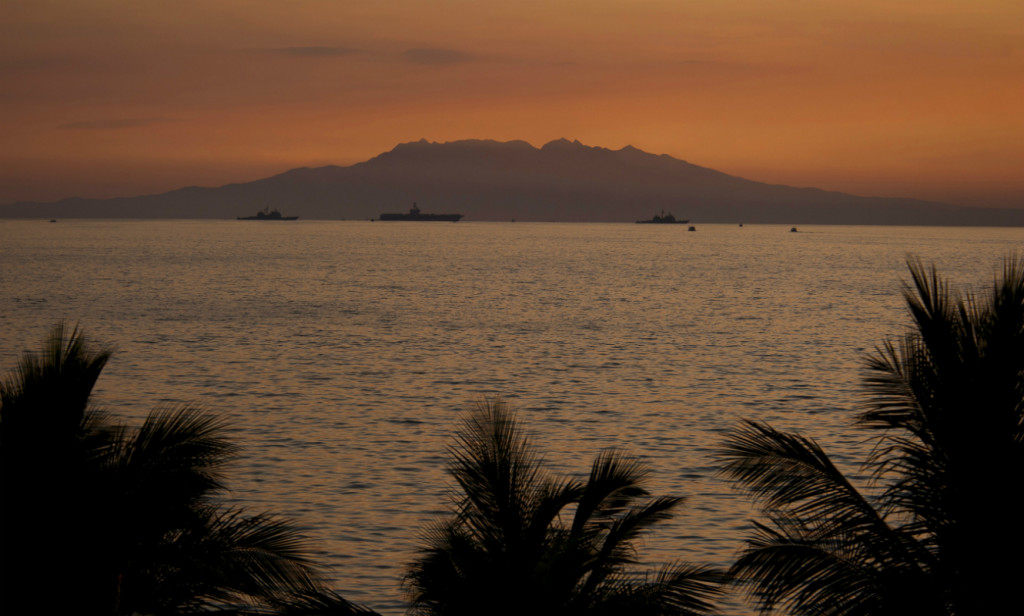Don’t Let the Tyranny of Jointness Rule the Indo-Pacific

Should the U.S. Army take on Asia? That’s what Andrew Krepinevich argued recently at RealClearDefense. He suggests that the U.S. Army can contribute to greater combat capability in the Western Pacific through the addition of mobile artillery and missile units throughout the Philippine archipelago. While perhaps appealing along operational and tactical lines, such a deployment is a poor strategic choice for both the United States and its Army.
One need only examine the experience of the U.S. Army Coast Artillery sites in the Philippines in World War II and events from the First Gulf War to determine that this is an unsound course of action. In the Philippines, U.S. coastal artillery emplacements were robust, but their supporting infrastructure was not. Loss of air and sea control around the islands prevented resupply. Army coastal defense fought valiantly, but were cut off from re-supply and forced to surrender. Modern, mobile missile and gun artillery weapons might fare better for a short time, but ground forces scattered around the Philippine archipelago will be as hard to re-supply, and as likely to be cut off from logistical support and forced to capitulate, as were their 1941-era counterparts. The “Great SCUD missile hunt” of 1991 showed that mobile, land-based missiles would avoid destruction, but those Iraqi units operated in a much larger, more geographically favorable environment. Island-based missile forces operate in much smaller “kill boxes,” have little area to reposition or retreat, and must also rely on outside resupply efforts. Leave land-based anti-ship missile operations to friends and allies, and support them in the acquisition of such capabilities when needed.
The U.S. Army should not waste valuable personnel and equipment on such “nice to have” capabilities. The Army is expected to drop its end strength to 475,000 soldiers by the end of fiscal year 2016.These personnel and associated budget decreases demand the Army be organized around two basic missions: expeditionary, high-end combat forces such as those that slashed their way across Iraq in 1991 and 2003; and a Phase IV/counterinsurgency force designed to secure territory after a fight and restore basic services to civilian that arise in the aftermath of major combat. The United States cannot afford another conflict where it takes nearly two years to transition from an expeditionary combat army to a support stability/transition force capable of restoring self-government and security to an occupied territory, such as post-2003 Iraq.
The Army must not be allowed to ignore what it learned from the counterinsurgency effort of the last 15 years, as it did following Vietnam, and instead look to compete with the other services for missions that it is not presently trained or equipped to accomplish. The Army may not be looking to conduct another messy counterinsurgency operation, but recent events in the Levant and the Crimea suggest that the need for counterinsurgency operations will not abate in the near future. The return of a revanchist Russia equally demands the retention of well-qualified, high-end ground forces capable of advanced mechanized warfare.
At worst, a call for the U.S. Army to assume an offensive, land-based cruise missile role in the Western Pacific represents the “tyranny of jointness” in action. The re-shaping of the U.S. military as a joint force through the Goldwater-Nichols Act of 1986 was about allowing the services to combine their capabilities with greater efficiency when needed. The legislation was not designed to enforce jointness in every operation the nation mounted. The Army’s current expertise and equipment clearly suggest that the service should concentrate its efforts in geographic locations other than the Western Pacific, where great distances and extensive waterspace dictate the predominance of air and maritime capabilities. Scattering its forces around the archipelagoes of the Western Pacific would condemn them to isolation and eventual loss while in pursuit of the worst kind of service parochialism.
Steven Wills is a retired surface warfare officer who spent most of his operational career in small combatants. He is now a PhD candidate in Military History at Ohio University. His forthcoming dissertation examines the change in U.S. Navy strategy from 1989-1994 with an emphasis on the effects of the end of the Cold War, the Goldwater Nichols Act, and the First Gulf War on that change.
Photo credit: Mass Communication Specialist 2nd Class James R. Evans, U.S. Navy

